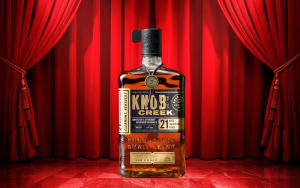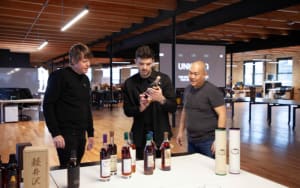The alcohol and beverage landscape in the United States is undergoing significant changes, with evolving consumer preferences and behaviors expected to shape the industry in 2025. New data highlights a series of trends that reveal how Americans are drinking differently and what they’re choosing to drink. From the growing popularity of ready-to-drink (RTD) cocktails to the rise of non-alcoholic alternatives, the future of alcohol consumption is marked by convenience, health-conscious choices, and a shift away from beer. Let’s explore the key trends that are expected to define the U.S. alcohol and beverage market in 2025.
The Decline of Beer and the Rise of Other Alcoholic Drinks
Historically, beer has been the most popular alcoholic beverage in the U.S., but recent data indicates that beer consumption is at an all-time low. Only 34% of Americans now prefer beer, a significant drop from the 41% of consumers who favored beer in the past. This decline in beer preference has been attributed to a variety of factors, including changing tastes and a growing preference for more diverse alcohol options such as liquor and wine.
In contrast, wine and liquor consumption have remained steady. Wine, in particular, is seeing a resurgence, with its popularity now almost on par with beer. This shift away from beer is not just a passing trend; it's part of a broader change in drinking habits, with consumers embracing a wider range of spirits and beverages.
One notable trend is the increased interest in agave-based spirits like tequila and mezcal, which have experienced rapid growth in recent years. By 2024, tequila had surpassed vodka to become the top-selling spirit in U.S. bars. The rise of agave spirits signals a preference for more flavorful, artisanal alcohol options, and it's clear that tequila’s dominance is set to continue in 2025.
The Growing Popularity of Ready-to-Drink (RTD) Beverages
In recent years, RTD (Ready-to-Drink) beverages have become increasingly popular. Consumers are gravitating toward the convenience of pre-mixed drinks that offer high-quality cocktails without the need for bartenders or complex preparation. The RTD cocktail market is expected to double in value by 2029, and the trend is not showing any signs of slowing down.
Hard seltzers were a major trend in previous years, but premium pre-mixed cocktails are now taking the lead. These high-end RTD options provide consumers with a hassle-free way to enjoy sophisticated cocktails, making them a preferred choice for those seeking both convenience and quality. The demand for RTD beverages is particularly strong among younger consumers who prioritize quick and easy access to alcohol without compromising on taste or experience.
Non-Alcoholic Beverages Continue to Thrive
One of the most significant shifts in the alcohol industry is the growing popularity of non-alcoholic (NA) beverages. With more consumers becoming health-conscious or opting for a sober-curious lifestyle, non-alcoholic beer, wine, and spirits have seen impressive growth. In fact, sales of non-alcoholic spirits surged by 15% in 2024, and NA beer experienced a 6% year-over-year increase.
This trend is particularly prominent among younger generations, including Millennials and Gen Z. Together, these two groups account for nearly two-thirds of all non-alcoholic beverage consumption. The rise of functional beverages, such as those infused with CBD or nootropic ingredients, has further fueled this growth. In 2023, functional beverages saw a 15% increase, with consumers seeking alternatives that not only taste good but also offer potential health benefits.
The growing demand for non-alcoholic options shows no signs of slowing down. In fact, the sober-curious movement is expected to continue growing well into the future, with non-alcoholic drinks projected to see a compound annual growth rate (CAGR) of 17% through 2028. As more consumers embrace mindful drinking, bars, restaurants, and retailers will need to expand their non-alcoholic offerings to cater to this growing segment.
Premiumization Takes a Back Seat to Affordability
For several years, consumers have been willing to spend more on premium spirits, with high-end bottles commanding significant price tags. However, the trend of “premiumization” has started to slow down, especially as economic factors like inflation have made consumers more budget-conscious. In 2024, sales of ultra-premium spirits (those priced above $100) dropped by 8.5%, while mid-tier premium spirits (priced between $50 and $99.99) saw a decline of 4.3%.
Instead of splurging on luxury spirits, many consumers are shifting their focus to affordable luxury options priced in the $17 to $49 range. This trend reflects a desire for high-quality products at more accessible price points. While consumers still want premium experiences, they are increasingly looking for value and are more willing to choose products that offer a balance of quality and affordability.
Alcohol Delivery: A Growing Convenience
The rise of online shopping and delivery services has significantly impacted the alcohol industry. In 2024, 40% of consumers reported ordering more alcohol for delivery compared to the previous year. Alcohol delivery has become the new normal, with consumers choosing the convenience of having drinks brought straight to their doors. The trend is particularly popular among consumers who prefer to shop from the comfort of their homes and save time.
Third-party apps like Drizly have made it easier for consumers to order alcohol from a variety of retailers, and 58% of consumers have used such apps in the past six months. The most commonly ordered items through these services include beer, wine, and RTD cocktails, with each category being ordered by more than half of delivery customers.
The main reasons consumers prefer alcohol delivery are convenience (39%), time-saving (37%), and safety (23%)—with many consumers ordering alcohol for delivery to avoid driving after drinking. Additionally, bulk purchases (22%) are made easier through delivery services, especially for heavy items like large bottles of wine or beer cases.
The Impact on Bars, Restaurants, and Retailers
The alcohol industry’s transformation presents both challenges and opportunities for bars, restaurants, and retailers. To stay competitive, businesses will need to adapt to shifting consumer preferences and invest in trends that are expected to grow in 2025.
For instance, bars and restaurants should expand their non-alcoholic offerings to cater to the increasing demand for mocktails, NA beer, and functional beverages. As non-alcoholic options become more mainstream, providing a wide range of choices will be key to attracting health-conscious consumers and those who prefer to drink less.
Tequila and mezcal should be prioritized in cocktail menus, as these agave spirits continue to dominate the spirits market. Bars that feature these popular spirits are likely to see increased sales as consumer demand for tequila-based drinks shows no signs of waning.
Additionally, offering delivery-friendly options—particularly RTD cocktails and wine—can be a smart move for businesses looking to capitalize on the convenience-driven consumption trends. As more consumers turn to delivery services, providing options that are well-suited for at-home enjoyment will be crucial for staying relevant.
Finally, focusing on affordable premiumization is a smart strategy for bars, restaurants, and retailers. While consumers may still seek high-quality drinks, they are increasingly looking for options that provide a good balance of quality and price. Offering “affordable luxury” spirits in the $17-$49 range will appeal to cost-conscious customers who want an elevated drinking experience without breaking the bank.
Conclusion
As the alcohol and beverage industry continues to evolve, 2025 will bring significant shifts in consumer behavior. From the decline of beer to the rise of RTD cocktails, non-alcoholic options, and agave spirits, these trends highlight a growing demand for convenience, quality, and affordability. Bars, restaurants, and retailers will need to stay ahead of these changes by offering innovative products and adapting to the changing tastes of today’s consumers. Whether it’s expanding non-alcoholic options, embracing delivery services, or focusing on affordable luxury spirits, the businesses that thrive in 2025 will be those that are responsive to the evolving alcohol and beverage landscape.
This article is based on data found here.




